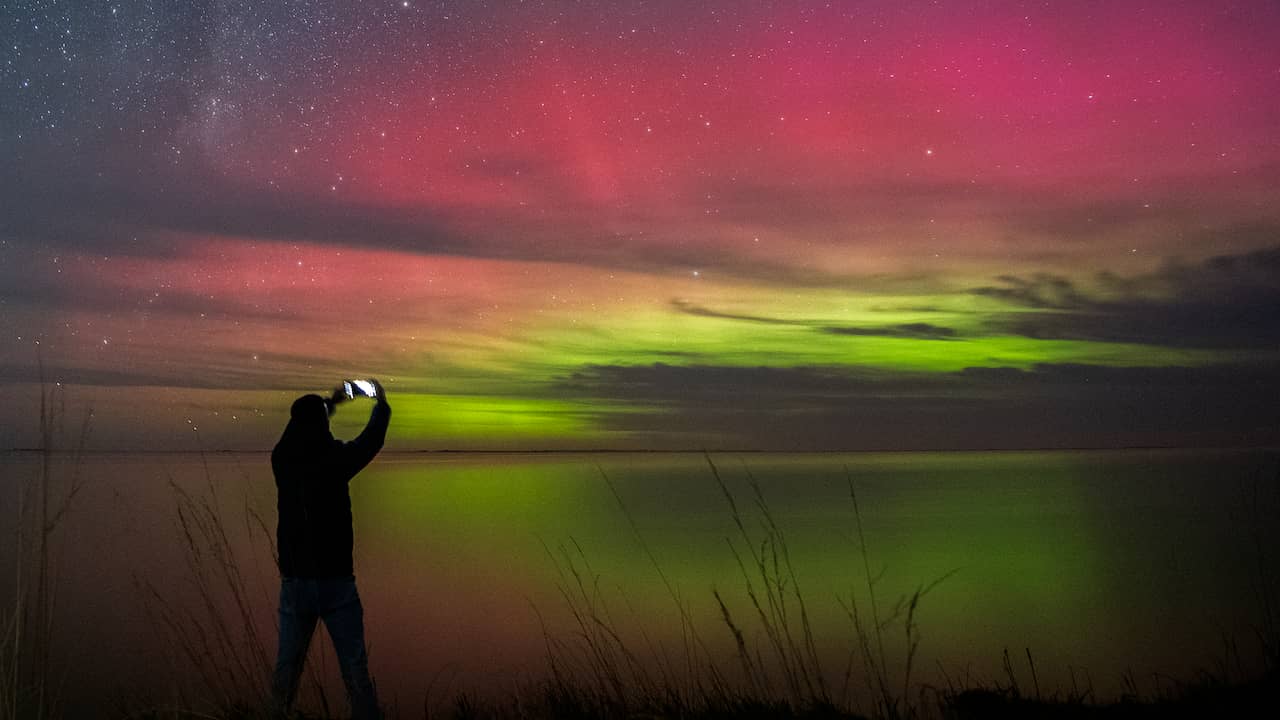Magnetic storms are rated on a scale of 1 to 5. 1 is a minor storm and 5 is an extreme one. The storm that reached its peak on Friday is a Category 4. The last time such a severe storm reached Earth was in 2017.
Magnetic storms are common, but rarely as powerful as today. Another storm is expected over the weekend, which will be somewhat weaker.
Explosions are constantly taking place on the surface of the sun. In addition, energy particles are shot in all directions with great force.
When those particles collide with the Earth’s atmosphere, they react to the magnetic field surrounding our planet. That collision causes, among other things, the aurora borealis, also known as northern lights or southern lights.
Beautiful light shows in the sky
In the United States, Canada and Northern Europe, among others led the magnetic storm to beautiful skies. The US weather service SWPC, which monitors the immediate environment of the Earth, did not see the storm coming.
At the end of February, the northern lights could also be seen in many places, including the Netherlands. This was also caused by increased solar activity.
Besides the beautiful light shows in the sky, Friday’s storm had little effect. Magnetic storms are not known to affect human health. However, they can cause problems with electrical equipment and even overload power grids.
In New Zealand, the launch of a rocket had to be postponed due to the magnetic storm. Planes remained grounded in other places.
Unfortunately, this content cannot be displayedWe do not have permission for the necessary cookies. Accept the cookies to view this content.


